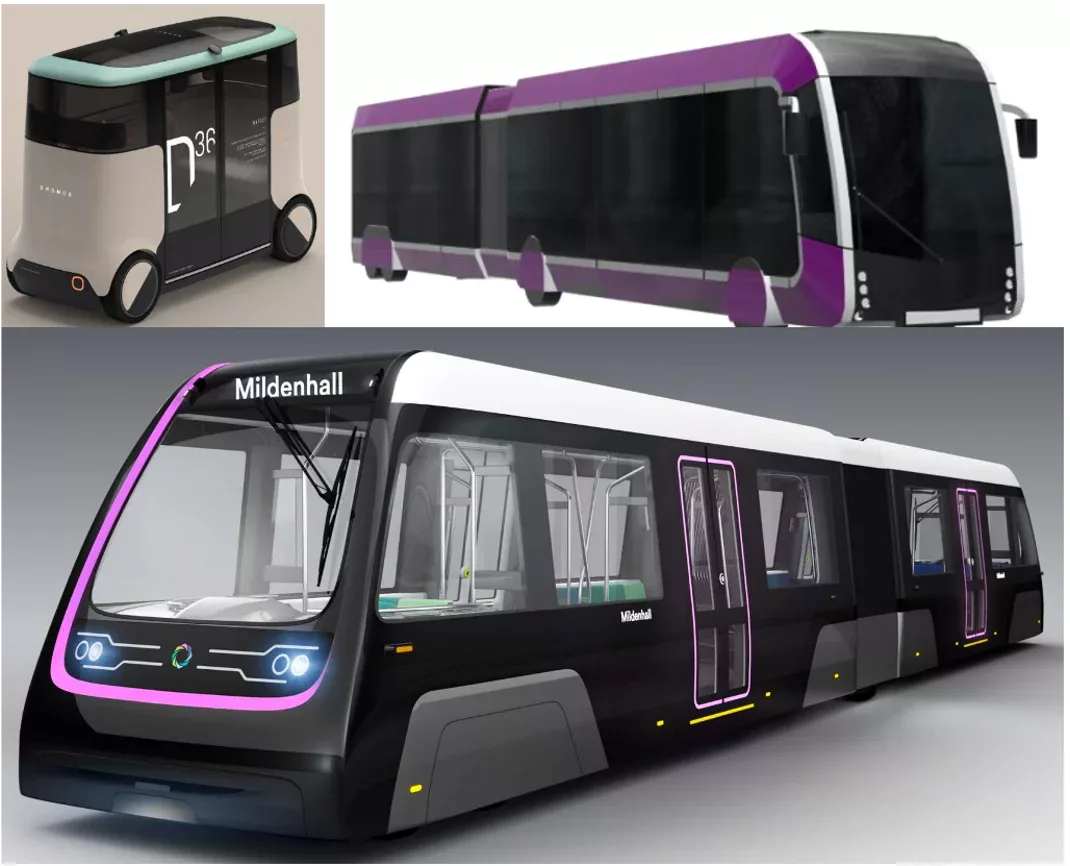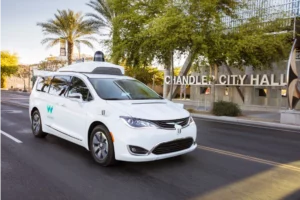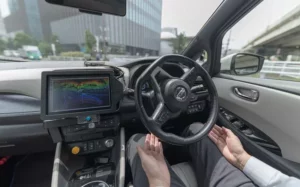“Bold, pioneering” conceptual designs have been revealed for the planned Cambridge Autonomous Metro service, which aims to “revolutionise” travel around the city and region.
Three different ideas have been put forward to help shape and transform how the CAM vehicle, infrastructure and system would operate.
The CAM project has a mission to “be transformational for the future of the region, while remaining deliverable and offering value for money”. The people behind it say the concept design challenge has in itself been an innovative process, searching for expertise across the widest possible market for the latest technologies and thinking for a new way of delivering public transport in the 21st Century, and for a region the size of Cambridgeshire and Peterborough.
They say that, while the design challenge was not intended to find an ultimate delivery solution for CAM, aspects of the designs and innovations demonstrated could be adopted as part of the next business case phase which begins in April.
Three lead suppliers developing the designs, Dromos Technologies, Egis and Mott MacDonald, brought in expert partners from a range of disciplines as part of their consortia, to help develop the wide-ranging elements of the CAM solution required.
Lars Herold, CEO of Dromos Technologies, said: “The Dromos Autonomous Network Transit (ANT) approach offers a world-leading innovative transport solution for CAM, which will define Cambridgeshire & Peterborough as a pioneer in future mobility.
“With up to 84 stops across the CAM network, Dromos delivers significant passenger benefits. Passengers travel non-stop in their own Dromos vehicle, without having to share with other passengers. The system runs on-demand, 24/7, 365 days a year. Passengers request a CAM ride through their own devices, or from electronic kiosks at CAM stops, with ride availability in under two minutes any time of day. The vehicle offers generous interior space, work tables, wifi and space for bikes and luggage. Because vehicles travel non-stop, journey times are short and reliable. Vehicles and stops are fully wheelchair accessible. Dromos offers a comfortable and individualised transport experience accessible to all.
The Dromos ANT solution delivers rail system levels of capacity for CAM with space requirements and construction time compared with traditional mass transit systems. As a clear demonstration of these benefits, Dromos has proposed a concept design for CAM, which can be delivered quickly. It’s highly flexible, with options for tunnels, underpasses, elevated lanes or segregated surface alignment, making it easy to implement to suit the demands of the urban or rural landscape. Moreover it offers significant environmental benefits and is carbon neutral at point of use. Simply put, it’s what the future of public transport looks like.”
Egis’s Gilles Autuori, Executive Vice President – Head of Railways & Urban Transit Projects for Europe and APAC, commented, “Based on our experience of similar projects worldwide we offer an alternative solution that we believe to be scalable, cost effective, environmentally friendly and sustainable and which places the user experience at the heart of the system. We propose innovations across the entire scope of the infrastructure, vehicle and operational concepts and enhanced connectivity by incorporating improvements for walking, cycling and modal interchange as well as integrated first/last mile services achieving improved coverage and accessibility to the system.
“Our roadmap to full driverless operation provides a logical progression allowing for efficient and safe transitioning to the ultimate vision of an on-demand, customer responsive, seamless journey experience.”
Stephen Luke, Practice Leader for Rapid Transit at Mott MacDonald explained, “This complete concept design brought together expertise from across Mott MacDonald and specialist consultants Maynard, MTR, Podaris and Transport Design International.
“Our design fully considers all the elements of how the CAM should be delivered: user experience, vehicle, infrastructure, operations, sustainability and finance and funding. The golden thread running through our concept is the clear focus on improving people’s lives: we want to provide a community-based, sustainable, accessible mode of transport that improves the liveability of the region and that provides skilled jobs in manufacturing and maintenance.
“Our concept features CAM stations that are reimagined as community-centred hubs; spaces that serve the public. We have put forward a modular construction approach, which will not only use local technology and manufacturing expertise but will also allow for each hub to the constructed in response to the specific and evolving needs of the local community.
“The team at Transport Design International has designed a fully autonomous, battery powered, two-car vehicle, accessible to all and which will provide smooth and fast transport. The bidirectional all-wheel design makes it highly suitable for the towns, cities and tunnels of Cambridgeshire.
“The collaborative environment we established at the start of this process means that we have been able to draw upon the very best specialist expertise in transit design and create a credible, scalable and flexible concept using a blend of new and proven technology, that will ultimately benefit the people of Cambridgeshire and Peterborough.”
Mayor James Palmer added, “We have challenged some of the brightest and best minds in infrastructure to show us the art of the possible. The resulting designs show the vast potential for CAM to deliver something truly groundbreaking, transforming our economy and people’s lives, through a system which is world leading. To bring world class public transport to a region of our size and population, we have to be bold and apply new thinking. These designs give us a powerful insight into what can be achieved when you are prepared to challenge convention.
“Cambridgeshire and Peterborough is a place founded on breakthrough ideas. This is the perfect place to be a pioneer in the future of transport. Many similarly sized cities and regions globally are themselves facing similar infrastructure challenges to us. It is vital to invest in our future infrastructure needs now, not in ten years when it will be too late and we fall behind our international competitors who had the foresight to act sooner.
“And what these designs also show is how flexible and adaptable to the needs of our region CAM can be. With innovative thinking like this, we can extend the network further into our region. Calls for CAM in places like Peterborough and Chatteris have already been made. As it develops CAM will grow and evolve, reaching new people and places, and keep up with advancing technologies to remain future ready.
“High quality infrastructure is expensive. The welcome upgrade of 21 miles of the A14 between Huntingdon and Cambridge cost £1.5 billion. By comparison CAM will offer about 90 miles of high quality, regionwide public transport, and at a potential cost of nearer £2 billion, according to some of these designs. That, alongside the cost to the economy of failing to act on putting in the right infrastructure, is another reason why the case for CAM is compelling.”
(Picture – top Dromos, Egis, bottom Mott MacDonald)





















